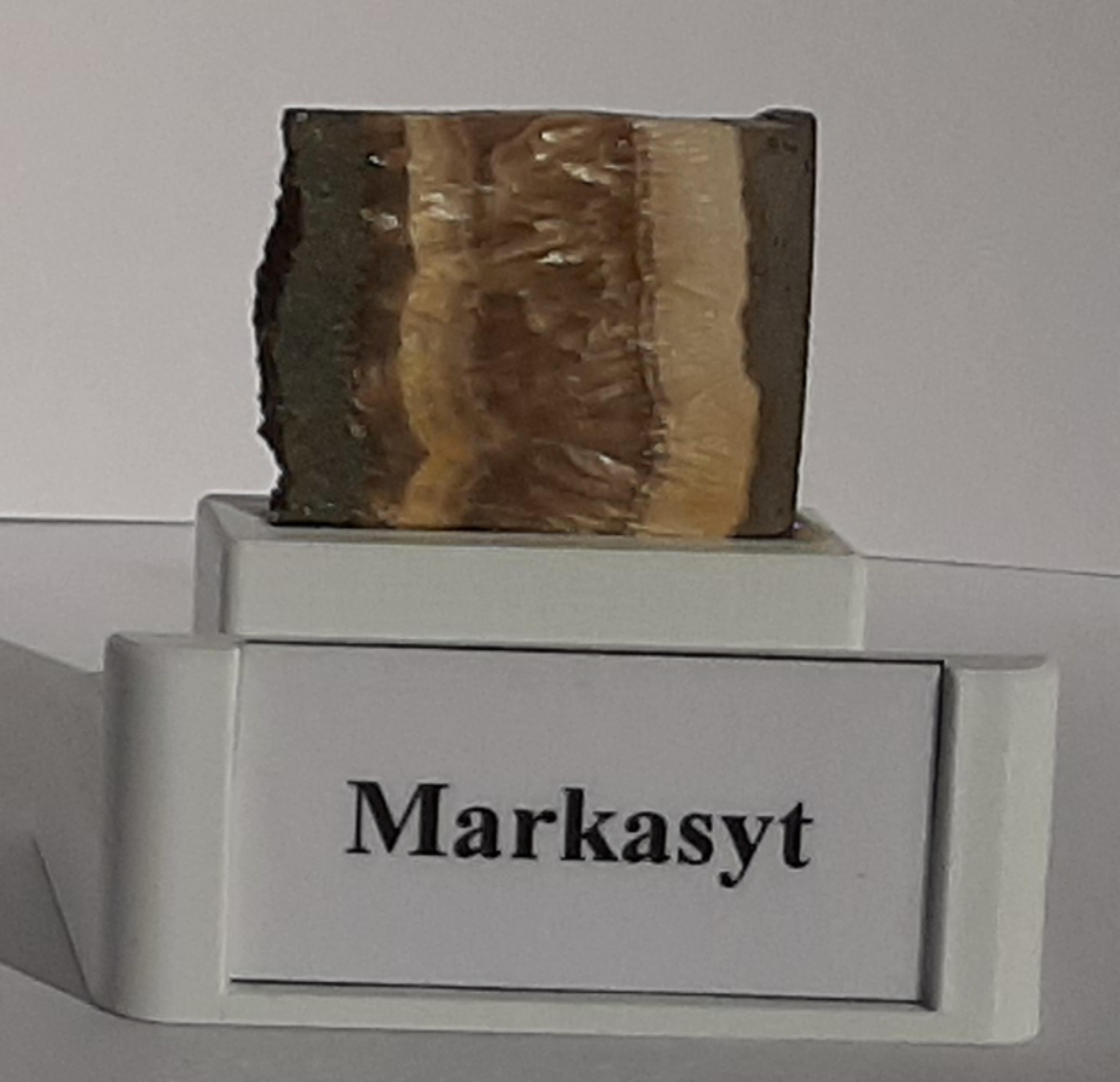
Marcasite
sulphides
4.89 g/cm3
rhombus
clear
FeS2
light yellow with a greenish tint
6 to 6.5 on the Mohs scale
metallic
Marcasite is formed at low temperatures from acidic aqueous solutions, mainly near the surface of the earth, and less often from deep thermal waters; can replace limestone and dolomite, forming from low-temperature hydrotherms that remove some of these rocks; often accompanies pyrite, although much rarer than it; occurs in many places on Earth, such as USA, UK, Chile, Russia, Spain, Belgium; in Poland can be found near Turoszow, Nowa Słupia, in Pomorzany near Olkusz, in copper ore mines (KGHM PM S.A. ) near Lubin
Marcasite comes from the group of sulphides; its crystals, viewed from the outside, may be flat plates or pyramids; sometimes marcasite crystals merge into spear-shaped clusters; the walls of marcasite crystals may also have curved planes; it is characterized by a metallic sheen, an indistinct breakage and a pronounced cleavage; it is used in the chemical industry to produce sulfuric acid, it is iron source, it is used for the production of all kinds of decorations inside and outside
The name comes from the Arabic word marqasitae, or the Persian marcasis, this is how marcasite and pyrite were defined, although it later took its own name; only in 1845 began to distinguish this mineral and the twin pyrite, although it is not an expensive mineral, it is very difficult to process, because it has a high tendency to disintegrate during formation; according to archaeological findings, the origin and use of jewellery with marcasites come from ancient Greek civilisations; the Greeks are thought to be pioneers in this regard, while the Incas of South America used marcasite stones in a wide range of objects, including decorative items and jewellery; marcasite jewellery gained immense popularity during the Victorian era; it was thought to be a discreet alternative to rich jewellery adorned with massive diamonds or other coloured stones; in many cultures authentic marcasite stones or jewellery with marcasite stones were passed down from generation to generation as a souvenir


